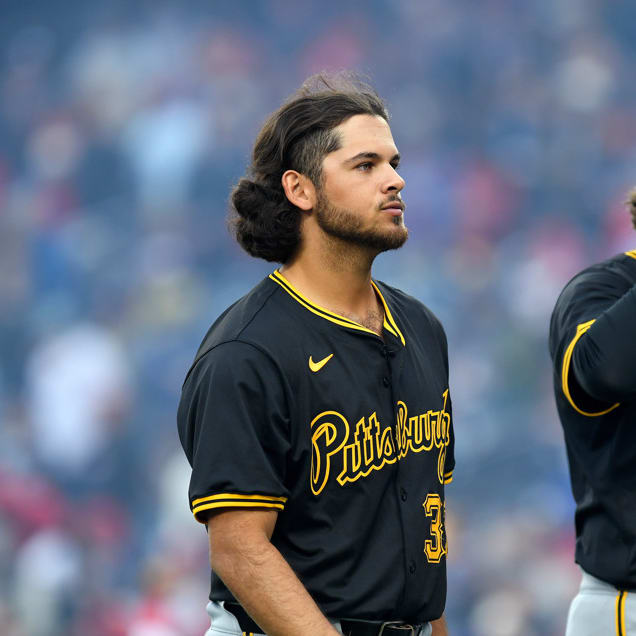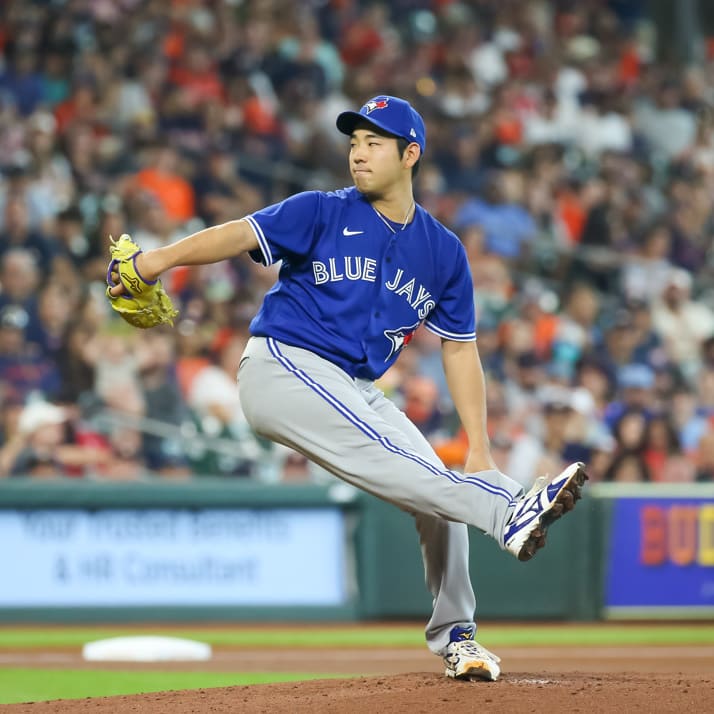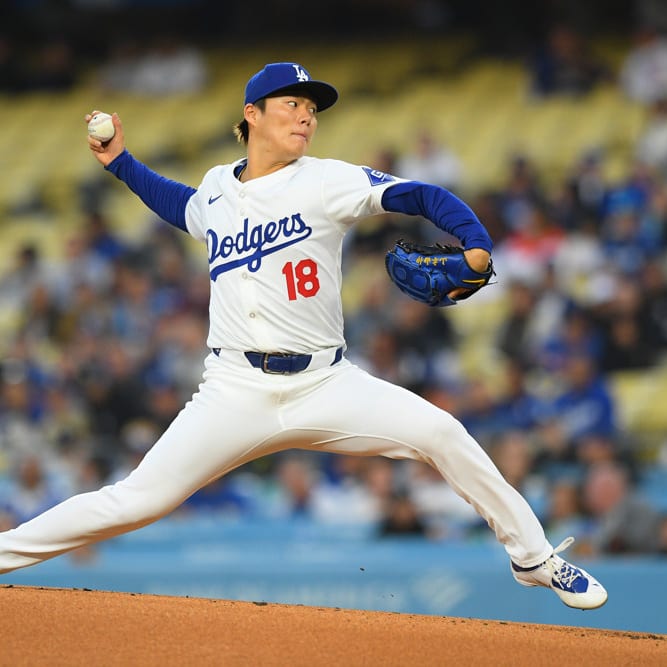This article is part of our Mound Musings series.
My favorite part of my weekly Mound Musings articles would be the questions and answers included in the comments. Interaction with readers is always something I look forward to, because to be honest, there aren't many things I like to discuss more than pitchers and pitching. That said, the question I probably see most often focuses on predictions of future performance for this guy, or asking to rank a list of pitchers. Good questions to be sure, but I think I'll take this opportunity to talk about something that is a huge part of analysis – I'll call it "opportunity vs. ability" and we can discuss some things to keep in mind when providing an analysis or predicting results for the rest of the year. Okay, let's take a look at the opportunity vs. ability balance sheet:
Ability Comes First, But Not By A Large Margin
The most logical question would seem to be, how do you weight ability and opportunity when evaluating a pitcher? For me, the first step has to be ability. After all, if the arm in question doesn't offer a level of ability worthy of a roster spot, there isn't much reason to dwell any longer. So, I decide whether the ability is there – or likely to be there at some point if I am interested in looking to the future – and then cross off the names that simply don't qualify. In many ways, that is actually the easy part.
All things equal, I
My favorite part of my weekly Mound Musings articles would be the questions and answers included in the comments. Interaction with readers is always something I look forward to, because to be honest, there aren't many things I like to discuss more than pitchers and pitching. That said, the question I probably see most often focuses on predictions of future performance for this guy, or asking to rank a list of pitchers. Good questions to be sure, but I think I'll take this opportunity to talk about something that is a huge part of analysis – I'll call it "opportunity vs. ability" and we can discuss some things to keep in mind when providing an analysis or predicting results for the rest of the year. Okay, let's take a look at the opportunity vs. ability balance sheet:
Ability Comes First, But Not By A Large Margin
The most logical question would seem to be, how do you weight ability and opportunity when evaluating a pitcher? For me, the first step has to be ability. After all, if the arm in question doesn't offer a level of ability worthy of a roster spot, there isn't much reason to dwell any longer. So, I decide whether the ability is there – or likely to be there at some point if I am interested in looking to the future – and then cross off the names that simply don't qualify. In many ways, that is actually the easy part.
All things equal, I could then just rank the remaining names on the list and my decision would be made. That would be nice – but it's not realistic. Most major league teams don't offer me the chance to make personnel decisions regarding who gets a 25-man roster spot, who takes a turn every five days, who pitches in high leverage relief situations, who closes and who sets up, and who is healthy enough to fulfill whatever upside I see in any particular pitcher's performance. While I'd like to believe they would be better off asking for my opinion, I suppose I would have to defer to their knowledge of payroll restrictions, day-to-day health status, and even individual personality traits.
Things are getting more complicated.
For this exercise, let's say I have a roster opening, and I am looking for a starting pitcher who can contribute the rest of this season. Ideally, my selection could step in immediately and start contributing right away, but if the upside is substantial, I could wait awhile and take the really good numbers that might come from a little patience. I have narrowed my list down to four names with the following profiles:
ARM 1 – You have identified him as the pitcher with the most ability of the four, but he is rehabbing from Tommy John surgery he had in 2014, and he is in the middle of a minor league rehab assignment. Further, he recently had a "minor" setback and was shut down for a couple of weeks. He just tossed a bullpen session with no reported problems, and is expected to return to his rehab assignment shortly.
ARM 2 – He is just a small notch behind ARM 1 in overall ability, and he is healthy and pitching. Unfortunately, he is young and still developing, his team is trying to manage his innings, and they have a relatively crowded rotation, so he has been bouncing between Triple-A and the majors, and he has pitched in relief with only a handful of spot starts. A couple of the pitchers in the rotation are really struggling, but they are veterans.
ARM 3 – A veteran pitcher who has displayed solid ability in past seasons, he fought through some minor injuries earlier this season, his mechanics got out of synch, and his numbers have been pretty poor. He was let go by his previous owner a couple of weeks ago when he gave up on him, and while there is some risk, you have seen signs that he is getting things straightened out. He's a "what you see is what you get" type at this stage in his career, so upside is limited to what he has done in the past.
ARM 4 – A fringy prospect who has toiled with limited appeal through a few seasons in the upper minors, he improved somewhat last year, had a good spring, and was called up about a month ago when his team experienced a couple of long term injuries to their rotation pitchers. He has performed reasonably well, and he appears to have solidified his hold on a rotation spot for the foreseeable future since the team doesn't have many viable alternatives. However, his limited repertoire is a concern.
And so, the selection process begins.
I'll start by listing them, with my criteria, from the bottom up. ARM 4 becomes the last name on my list. A two-pitch pitcher without an arsenal capable of keeping hitters honest over the long term is extremely risky. While he could develop other pitches, as his career progresses, that becomes less likely. He has the opportunity right now, but his ability has to be considered problematic. ARM 1 would probably be third on my list because of his injury status. A recent setback greatly enhances the risk, and even if he does make it back to the major leagues fairly soon, he will probably need to shake off considerable rust after being off for so long – this usually translates to inconsistent command and higher pitch counts – and it's also likely he will be on an innings and pitch count limit. Since the objective is to find help for this year, ARM 1 is probably a better bet for future seasons. If you are in a keeper, he might be worth a flyer, but not in a redraft.
That narrows it down to ARM 2 and ARM 3, and the choice may not be an easy one. In most cases, I tend to strongly favor the higher upside or ceiling, and that would push me towards ARM 2, but the extenuating circumstances of a cloudy (at best) opportunity could make him considerably less appealing when seeking help this season. If you can identify a relatively clear path to the starting rotation, even if it's not guaranteed, he might be worth the risk, but taking a close look at ARM 3 is probably warranted. I suppose I will tentatively make him the top choice. If you have seen clear signs of a return to previous form, and that form would be a step up in production from your rotation, he gets the nod and you take the boost he'll provide. I hope that exercise gave some insights on what to consider when assessing a pitcher to add to your roster.
Factors to keep in mind when assessing the likelihood of opportunity:
- Has the pitcher been successful in previous opportunities to start and pitch deep into games? If that success came in the minor leagues, it should have come against higher level competition, and over enough innings to provide a realistic sample size. If the parent club has repeatedly passed him over and tried others, they may have doubts as to his potential for success.
- The deeper the mound corps at the major league level, the more clear cut the opportunity must be. If the parent club has six or seven viable candidates, the leash will probably be short even if your guy gets a shot. That could result in a trial of only one or two starts and you might find yourself going through the same process again and your options may not be as appealing.
- Injury rehab, young blue chip prospects with limited innings in previous seasons, and pitchers still requiring work on repertoire to reach their potential can all be significant factors in the opportunity equation. Many organizations, I would say most, will be reluctant to expose their elite prospects too early. The higher the ceiling, the less likely they will be to throw them to the wolves too soon.
- Lastly, always remember that money will very often contribute to decisions. If a team has invested heavily in a veteran player, that player may have a long leash making it difficult for a younger player to get an opportunity even when their performance makes it seemingly inevitable. If your guy has minor league options and other alternatives do not, he may be the odd man out.
Some Notable Rotation Ramblings:
- Manny Banuelos was impressive in his first couple Atlanta starts. He left early with cramping and dehydration in the first and with a high pitch count in the second. Banuelos was a highly regarded prospect at one time, but has yet to show he can throw strikes consistently. Let's wait and see.
- Revisiting that opportunity vs. ability theme, the Twins announced they would send Trevor May to the bullpen when Ervin Santana returned from suspension. He has more ability than Tommy Milone or Mike Pelfrey, but his opportunity just evaporated right before the eyes of his fantasy owners.
- The Phillies are hinting that their top pitching prospect, Aaron Nola, might join the rotation fairly soon. There is certainly plenty of room for a pitcher with his upside in their rotation, but keep in mind he could endure some growing pains and the team is still a bad team. Best guess is just after the All-Star break.
- I watched Hisashi Iwakuma's first start back from the disabled list. He's not a power pitcher so great command is especially important, and the rust showed as he still paid for mistakes with home runs allowed. He did display some crispness, especially with his split, so I think it will get better as he gets back in synch.
- I had pretty much given up on Jeremy Hellickson after watching him become far too hittable, far too often. Being in Arizona magnified that concern, but I have watched a couple of starts that suggest he is adjusting. I'm not convinced he is back to fantasy relevance just yet, but I am monitoring him again.
- The ultimate definition of patience required might be Nathan Eovaldi. He has a great arm with an upper 90s fastball, but lack of consistent secondary pitches takes the edge off that fastball, reduces his strikeout potential, and elevates his pitch counts. He shows flashes to tease us. It could click anytime.
Endgame Odyssey:
Rafael Soriano has yet to convince the Cubs he is the answer, but is now in the minors, while Jason Motte is doing the best he can to make sure they don't feel they need him. He's their best option right now. Andrew Miller is close to returning to the Yankees, and he will likely at least share in closing duties with Dellin Betances. As might have been expected, the Mariners are sneaking Fernando Rodney into save chances. He's still shaky on many nights, but he could supplant Carson Smith if he can avoid any serious implosions. Jenrry Mejia has returned to the Mets, but they have no reason to move Jeurys Familia out of the closer's gig. In Toronto, Roberto Osuna has probably fought off challengers currently on the active roster, but Aaron Sanchez looms as a very possible threat to his job when he comes off the disabled list. In the hmmm category, Tim Lincecum is expected to return to the Giants fairly soon, and there is talk he could pitch out of the bullpen. After a brilliant start to his career as a starter, he has fizzled and it's just possible the Giants could give him a shot at closing. There is no one in their bullpen with a clear closer's profile, and he could be the answer the team needs.










